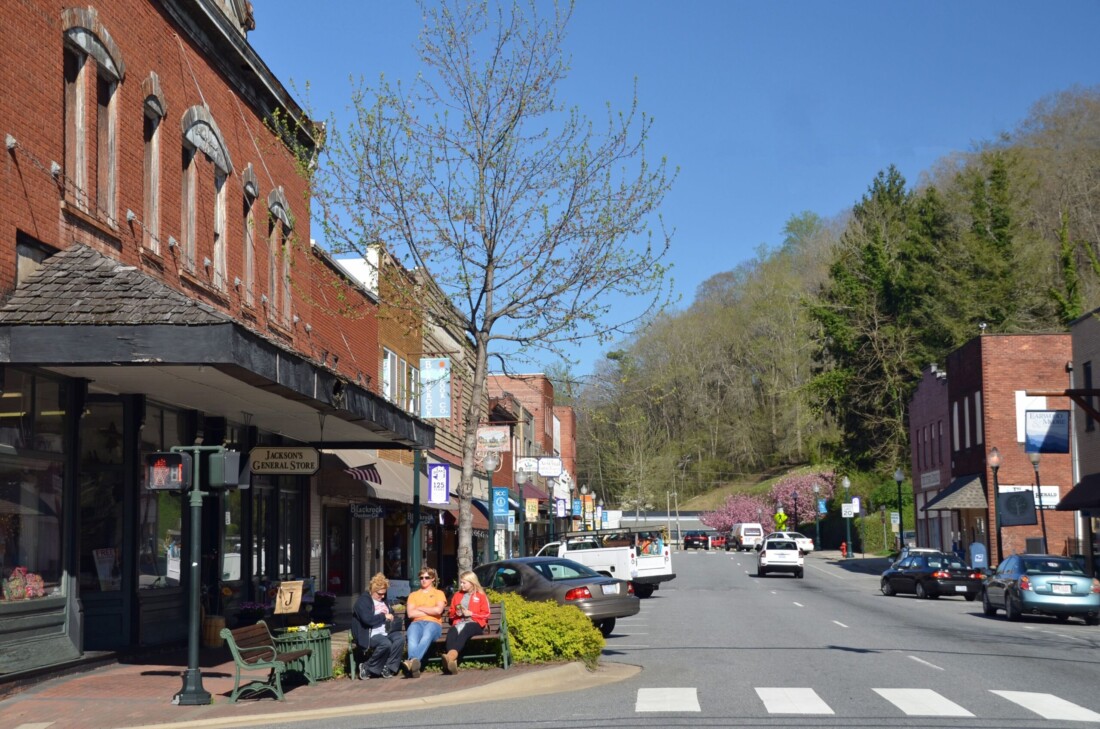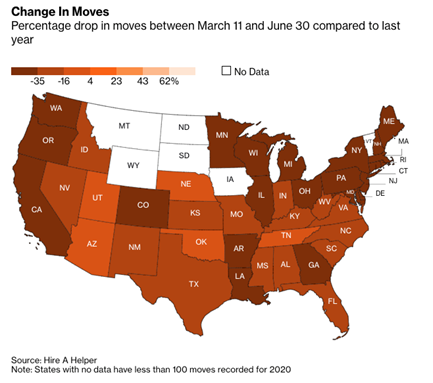The Great Migration? Small Town Economics and a COVID-19 Population Reshuffle
Small towns may not be able to compete with large and mid-sized cities in terms of major amenities, but small towns have unique assets on which they could capitalize. Place-based strategies contribute to the development of the community and may make that community more attractive for remote workers. Prior to the pandemic, workers craved communities with peer support groups and places to foster creativity. Co-working spaces and other entrepreneurial supports can help develop rural communities into thriving areas full of creative connections.

Co-Author: Anita Brown-Graham
In the spring of 2020, the COVID-19 pandemic began to shut down much of the nation and many people were sent home to work. The idea emerged that remote work would allow people to move “anywhere” and result in the de-concentration of cities. Observers began to speculate about a great population reshuffling.
Anita Brown-Graham, director of the ncIMPACT Initiative at the UNC School of Government, considered the impact this potential reshuffling might have on towns in her piece for the Virginia Economic Review, “Will Small Towns Become Magnets for Talent Recruitment?” Brown-Graham tackled the question: will significant numbers of people move out of cities and into rural communities to escape the virus and enjoy benefits of living in small towns? She noted this idea begged the questions as to whether rural communities should prepare for a great influx of residents and, if not, what should rural communities do to mine silver linings from the devastating pandemic?
 Many believed that residents would flee cities because of the coronavirus, given that the density of people might make social distancing more difficult. These advocates noted that rural areas would be more feasible alternatives given the lower density of people. Other reasons cited for a great migration to rural areas included the cleaner environment, less expensive housing, stronger sense of community, and new opportunities for remote working and banking. However, others pointed out barriers to migration, including the reality that a great deal of rural areas have spotty or incomplete broadband access, a limited supply of housing, and lack job options to support remote workers in the event of their remote-job loss.
Many believed that residents would flee cities because of the coronavirus, given that the density of people might make social distancing more difficult. These advocates noted that rural areas would be more feasible alternatives given the lower density of people. Other reasons cited for a great migration to rural areas included the cleaner environment, less expensive housing, stronger sense of community, and new opportunities for remote working and banking. However, others pointed out barriers to migration, including the reality that a great deal of rural areas have spotty or incomplete broadband access, a limited supply of housing, and lack job options to support remote workers in the event of their remote-job loss.
ON THE MOVE
The data are mixed regarding moving during the COVID-19 pandemic. A PEW Research Center study found that twenty-two percent (22%) of adults either moved or knew someone who moved due to COVID-19. Bloomberg CityLab identified some of this movement as outmigration from several major cities, but to other major cities instead of rural areas. They gathered data from several moving companies and found that in general, moving was lower than normal from March through June 2020 during COVID-19.
Further complicating matters is the huge decline and then increase in sales of existing homes in the United States to the highest number of units sold since 2006. The delay could have been related to shut downs or the lack of clear information around safety concerns, and the subsequent spike a result of pent-up demand. Bloomberg CityLab’s studies found that the majority of people who moved did not move in response to the coronavirus, which lends credence to the idea of pent-up demand released over the summer as states reopened.
downs or the lack of clear information around safety concerns, and the subsequent spike a result of pent-up demand. Bloomberg CityLab’s studies found that the majority of people who moved did not move in response to the coronavirus, which lends credence to the idea of pent-up demand released over the summer as states reopened.
Though many people purchased homes, and some moved in response to the coronavirus, we did not see an outpouring of city-dwellers to rural towns. However, that does not mean there is no interest in rural living. In fact, Redfin found that pageviews of homes in rural areas and small towns far outpaced pageviews in urban metro areas. The interest has not yet translated to sales, but potential for future migration still remains. Where does that leave rural areas?
Rural communities may be more economically vulnerable to the coronavirus pandemic due to a reliance on small businesses and industries that have been hardest hit. In response, rural communities should do what they can to build resilience and retain those who already live and work in their communities. The pandemic could represent an opportunity to focus on growing rural communities through recovery and resilience efforts. Rural areas should further develop their existing workforce to both strengthen the community and avoid relying on an influx of remote workers that the data do not yet support.
BROADBAND ACCESS
Broadband access has become a focal point for workforce development as schools and training programs transitioned to digital learning during the pandemic and many students do not have adequate access. Some students are experiencing learning loss, though the true extent is not yet clear. A  report by NWEA found that students who took the MAP Growth test saw only a moderate drop in math learning, but that a quarter of students were missing from the dataset, obscuring the extent of learning loss. The missing students, who were more likely to be from underserved, minority groups, may not have taken the test as a result of a lack of technology or internet access. Improving broadband access is a crucial starting place for growing local talent. Local Government Federal Credit Union Fellows (LGFCU) suggest five ideas to combat learning loss:
report by NWEA found that students who took the MAP Growth test saw only a moderate drop in math learning, but that a quarter of students were missing from the dataset, obscuring the extent of learning loss. The missing students, who were more likely to be from underserved, minority groups, may not have taken the test as a result of a lack of technology or internet access. Improving broadband access is a crucial starting place for growing local talent. Local Government Federal Credit Union Fellows (LGFCU) suggest five ideas to combat learning loss:
- Improve remote learning infrastructure;
- Invest in academic supports such as tutoring, summer school, year-round school, and community colleges;
- Improve “wrap-around” social services for students;
- Provide more work-based learning options such as career mentorship and apprenticeship programs; and
- Leverage and provide financial rewards for the teachers’ and school employees’ expertise.
Small towns may not be able to compete with large and mid-sized cities in terms of major amenities, but small towns have unique assets on which they could capitalize. Place-based strategies contribute to the development of the community and may make that community more attractive for remote workers. Prior to the pandemic, workers craved communities with peer support groups and places to foster creativity. Co-working spaces and other entrepreneurial supports can help develop rural communities into thriving areas full of creative connections. The transformative placemaking supports that arose in the wake of COVID-19 are spurring innovation and may help strengthen rural communities’ overall resilience. Though rural communities may not have the resources to pivot or adapt as quickly as cities in response to COVID-19, a thoughtful response focused on building up the strengths of the community—especially its workforce—can be a powerful recovery tool that allows small towns to compete on their own terms.
To learn more about Keys to Economic Recovery from COVID-19, please visit our project page: https://go.unc.edu/KeystoRecovery
